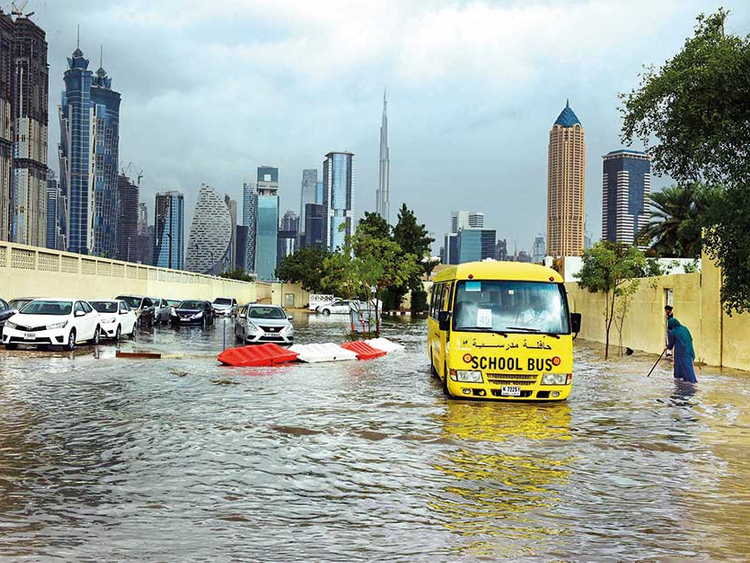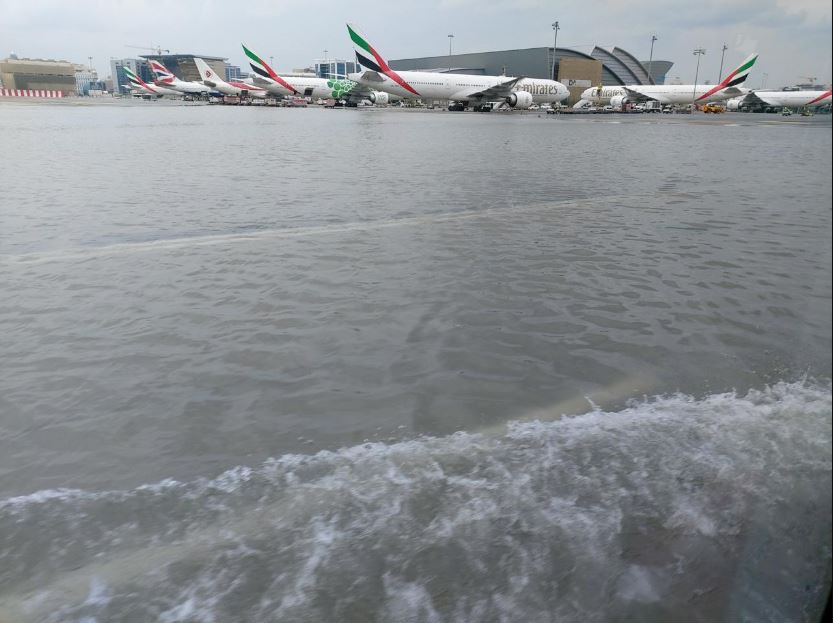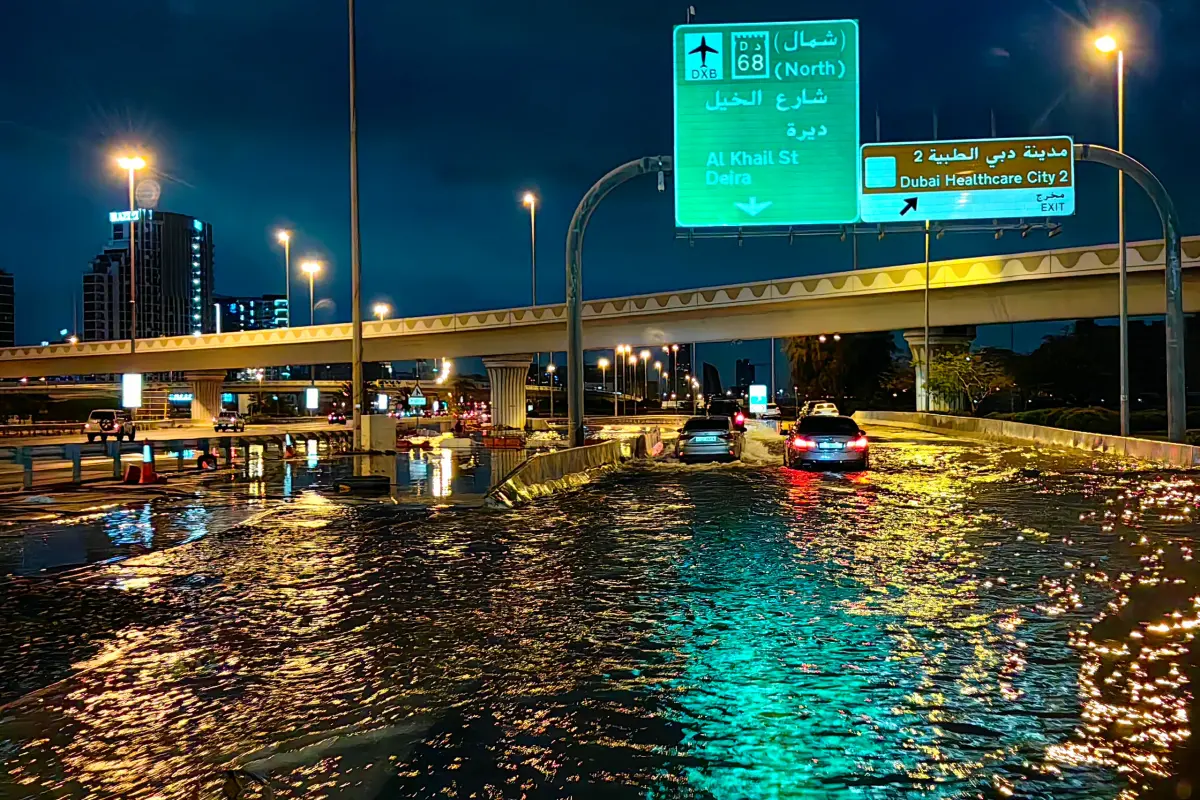Unprecedented Rainfall Hits Dubai: What You Need to Know

Dubai, known for its scorching deserts and futuristic skyline, recently experienced a weather event of historic proportions. The United Arab Emirates encountered the heaviest rain recorded in 75 years, causing chaos across the region. Let’s break down what happened and its impact.
Record-Breaking Rainfall

On a typical year, Dubai receives a mere 3.12 inches of rain. However, in just one day, the city saw a staggering 5.59 inches of rainfall, equivalent to over 2 years’ worth of rain. To put this into perspective, the average annual rainfall at Dubai International Airport is around 94.7 millimeters, making the recent rainfall more than double the yearly average. This resulted in overflowing pools of rain water throughout the city such as on major road networks, inside communities and within office and residential buildings. There were a lot of unfortunate stalling out of vehicles in deeper-than-expected water covering spots on some roads where there were major dips in the road which held and retained water as water levels rose. That included parts of the Sheikh Zayed Road, a 12-lane highway through downtown Dubai, Emirates Road and certain communities such as Arabian Ranches, DIP and Mudon as well as many others.
Airport Disruptions and Transportation Woes

The heavy rain wreaked havoc on Dubai International Airport, one of the world’s busiest airports. Floodwaters inundated the runways, causing flight disruptions and cancellations. Passengers faced challenges reaching terminals due to water-covered roads, leading to chaotic scenes at the airport. Long-haul carriers like Emirates and FlyDubai experienced major disruptions, with flights diverted to alternative airports and huge delays to flights.
Many passengers remain stuck at Dubai airport, but authorities are working to provide food, drinks and accommodation to affected passengers. Emirates Terminal 3 restaurants are open and accepting food vouchers distributed to passengers. Taxi services are slowly returning to normal, and the Dubai metro is also running to and from the airport. Keep in mind though that taxis services have enacted surge pricing for now. On Thursday 18th April, Dubai Airport Authority has announced that international flights were able to land at Terminal 1 at DXB. Some flights had been prevented from landing at the terminal following the storm on Monday and Tuesday. Authorities urge travellers to check the status of their flights online before going to or from the airport and to delay travel if at all possible.
Causes and Speculations

While some speculated about the role of cloud seeding—a technique involving dispersing chemicals into clouds to induce rainfall—meteorologists pointed to a strong low-pressure system as the primary cause of the deluge. It is now clear that this was not the result of cloud seeding. Climate change was also cited as a contributing factor, with scientists warning of more frequent and severe extreme weather events globally.
Metro Services and Recovery Efforts

The heavy rainfall severely impacted Dubai Metro services, leaving commuters stranded at several stations. While operations were disrupted, authorities worked to restore services gradually. Shuttle services were provided to affected stations, ensuring essential transportation for residents and visitors amidst the challenging conditions.
Here are the Red Line stations that are operational:
Centrepoint Station to Business Bay Station
Jabal Ali to Expo 2020 Station
Centrepoint Station to GGICO Metro Station
Bur Juman Station to Business Bay Station
The RTA announced that services were back on four stations: Emirates Towers, Burj Khalifa/Dubai Mall, Financial Centre and Business Bay. “Work is ongoing to open the rest of the stations gradually,” it said. Those who have to go to affected stations in between are provided shuttle services for free.
Here are the Green Line stations that are operational:
Etisalat station to Abu Hail
Creek station to Al Ras
Safety Measures and Response
In response to the unprecedented rainfall, weather warnings were given days before the storm, work from home was announced, schools across the UAE closed for the week and enacted distance learning till April 22nd, metros are running for longer hours and government employees worked remotely. Authorities have deployed tanker trucks, emergency services and police to pump floodwater from streets and highways, manage traffic and recover damaged cars but some homes are still flooded. Areas such as Mudon, Dubai Investment Park, Shiekh Zayed Road and others were heavily affected.
Conclusion
The recent rainfall in Dubai serves as a stark reminder of the unpredictability of weather patterns and the urgent need for climate resilience measures. As the UAE and neighboring regions grapple with the aftermath of this historic event, efforts to mitigate the impact of extreme weather events and adapt to changing climate conditions become increasingly vital. As always, keep checking Viewit for vital updates about Dubai and the UAE.
Sources:
- Associated Press
- National Center for Meteorology
- World Meteorological Organization
Useful link:
This is a link shows which roads are currently clear and emergency numbers to contact: https://docs.google.com/document/d/1uTLlL7_ROTzZFBRmQaXnjdLlK_jFlxjyQDfKOV6O7Nc/edit?usp=drivesdk
Share this article on: